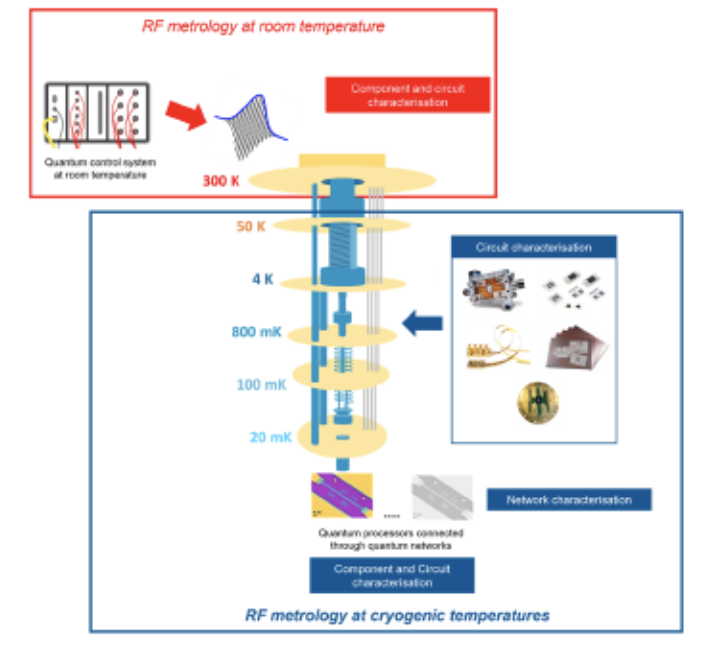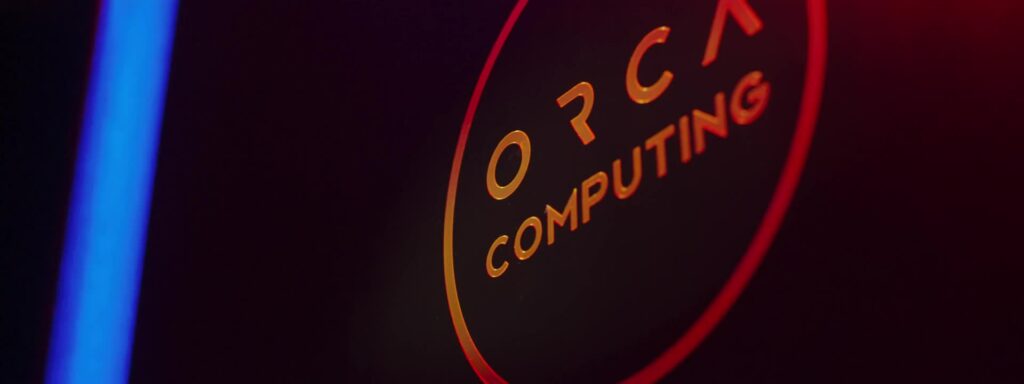Insider Brief
- Researchers need to build quantum computers — and all their peripheral components — so they can work in the universe’s most inhospitable conditions.
- In a recent research paper, UK’s National Physical Laboratory scientist summarized some of the advances they have made in creating precise measurement systems for microwave and quantum devices that can operated at extremely low temperatures.
- The team adds they are working to support industry and academia in creating new and improved devices for quantum computing.
- Image: graphic from the research paper.
It’s bad enough that quantum computing researchers are tasked with creating the most complex, most precise scientific devices perhaps in history, they also need to build these machines — and all their peripheral components — so they can work in the universe’s most inhospitable conditions.
But progress is being made.
Researchers from the UK’s National Physical Laboratory summarized some of the advances they have made in creating precise measurement systems for microwave and quantum devices that can operated at extremely low temperatures, down to just a few millikelvin (mK), according to a recent paper in the International Journal of Microwave and Wireless Technologies.

First, it’s important to note why this is important. Accurate RF characterization at cryogenic temperatures is needed to develop some of the integral components used in quantum computing. These include active and passive cryo-electronic devices, cables, interconnects, multiplexers, quantum and RF integrated circuits (ICs), flux quantum electronics, cryo-CMOS technologies, quantum hardware packaging and parametric amplifiers, according to the team.
These components, then, are absolutely necessary if we want to build more efficient and reliable quantum computers.
Here is a quick look at some of the recent developments in cryogenic radio frequency (RF) characterization that the team shared in the paper that they say might just open up new frontiers in quantum computing.
Innovations in Measurement Techniques
Recent research has led to the creation of sophisticated measurement systems capable of characterizing microwave and quantum devices at temperatures as low as tens of mK, including systems for measuring S-parameters of coaxial connectorized devices, on-chip devices, on-wafer devices and substrate materials, the researchers write. These systems are critical for understanding how these devices perform under the extreme conditions required for quantum computing.
The process involves placing devices under test (DUTs) inside a cold, isolated environment like a dilution refrigerator and interfacing them with room temperature test equipment such as a Vector Network Analyzer (VNA). This setup, though effective, poses significant challenges. The cables and components inside the refrigerator often introduce errors that must be corrected using specialized calibration techniques.
Overcoming Calibration Challenges
Calibration at cryogenic temperatures is as necessary as it is challenging. At room temperature, calibration typically involves connecting calibration standards to the measurement reference planes manually or using an electronic calibration (ECal) kit. However, these methods just don’t work at cryogenic temperatures because of the need for multiple cooling cycles and the variability of electronic device performance in such cold conditions.
To address this, researchers report they have developed specialized calibration standards and techniques that are deployed close to the DUT. These methods allow for accurate S-parameter measurements, shedding light on the true performance of devices and how they are affected by the low temperatures.
On-Wafer Measurement Capabilities
Microwave on-wafer measurements of on-chip or wafer-level planar ICs are essential for teams looking to scale quantum computers. Cryogenic on-wafer measurement allows for direct characterization of the “device under test” — or DUT — at cryogenic temperatures, eliminating the need for additional connectors or interfaces. This approach promises greater accuracy and insight into device performance, according to the researchers.
The NPL in the UK, in collaboration with Royal Holloway, University of London, are working hard to develop these capabilities. They are adapting a cryogenic probe station for microwave probing around 4 K and creating calibration and verification standards specifially based on coplanar waveguide structures. The team expects this to pave the way for even greater progress in commercial quantum computers.
RF Power and Noise Measurement
Microwave power characterization is yet another critical area. Accurate power measurements are necessary for characterizing active and nonlinear devices such as amplifiers, filters and mixers. Traditional room temperature techniques are unsuitable for cryogenic applications, again due to changes in the performance of standards at low temperatures.
The researchers are exploring new methods, including generating microwave power in a cryogenic environment and using quantum-based power sensors. These methods aim to provide SI — International System of Units — traceability and accurate power measurements at cryogenic temperatures.
Noise characterization is equally important. In superconducting quantum computing, low-noise amplifiers are crucial for accurately reading the state of qubits. Accurate noise measurements help control and verify the noise added by system components, which is vital for system sensitivity. Researchers are developing methods for measuring noise properties of amplifiers at cryogenic temperatures, including the cold attenuator method and the Y-factor method. These techniques require innovative calibration and measurement systems to ensure accuracy at cryogenic temperatures.
Future Directions and Industry Impact
The researchers write that the NPL’s ongoing efforts to develop these cryogenic measurement capabilities are part of the UK’s National Quantum Technologies Programme. This initiative aims to address the shortage of cryogenic microwave test and measurement facilities in the UK.
The team adds: “This includes the development of capabilities to characterize S-parameters, power, and noise of various devices at temperatures down to tens of mK. The capabilities will help to characterize coaxial connectorized devices and non-connectorized devices such as on-chip, on-wafer devices, and substrate materials.”
Ultimately, the researchers say the improved measurement techniques and capabilities that they are devising will be used “to support industry and academia in creating new and improved devices for quantum computing.”
The scientists include: Manoj Stanley, Xiaobang Shang, Murat Celep, Martin Salter, Sebastian de Graaf, Tobias Lindstrom, Sang-Hee Shin, James Skinner, Dilbagh Singh, Daniel Stokes, Manognya Acharya and Nick Ridler.
This is a summary of the work — although it’s aimed at being comprehensive, key points might be overlooked. Please review the paper for a deeper dive.















